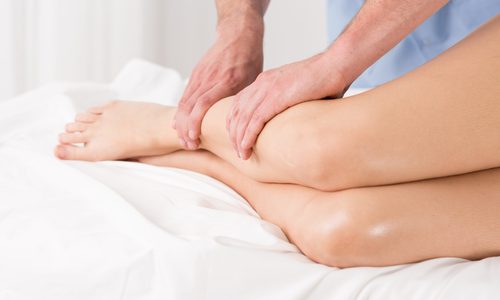‘Mechanotherapy’

Mechanotherapy is the use of mechanical therapeutics that optimise tissue healing, above and beyond what would normally happen if the body was left to its own devices.
High quality randomised controlled trials and systematic reviews have shown that prescribed exercise or movement, tailored to the individual, can benefit people with a wide range of musculoskeletal problems, from muscle tears, fractures, tendinitis and post-op’ recovery cases.
Massage – not just pleasantly relaxing
Massage has been used to ease sore muscles for thousands of years, and the new trend amongst athletes is the use of vibrating massage guns to rehabilitate muscle injuries. What actually happens at the tissue level to promote repair and remodelling of tendon, muscle, articular cartilage and bone whilst being mildly compressed, is being studied and minutely measured.
Scientists have discovered that whilst the immune system’s inflammatory response to a muscle’s injury (involving white blood cell neutrophils) is important in the initial stages, if neutrophils are left to stagnate at the injured site, they can end up inhibiting optimal muscle fibre regeneration. Whereas the use of compression, massage and controlled mechanical stimulation – that effectively evicts the inflammatory neutrophils – will enhance the tissue recovery and build much stronger muscle fibres.
Neutrophils do of course play an important role in clearing out the detritus of damaged tissue, but in flushing out those neutrophils once their clearing up job is done, enables the muscle to generate larger fibre sizes with greater strength potential.
Lymphatic Drainage Massage
Another mechanotherapy worthy of consideration involves the lymphatic system, which is an under-rated body system fundamentally important to cardiovascular disease, infection, immunity, cancer, and probably obesity, but essentially the four main challenges to 21st century healthcare.
The Lymphatic system relies on the movement of muscles to stimulate its flow, unlike blood circulation, which has a pump – the heart. This is why sitting still for lengthy periods of time can result in fluid build up in the tissues, swelling of the ankles etc.
Lymphatic massage compliments conventional massage in that the vast intricate network of lymph vessels acts as the waste repository of the blood system. When white blood cells have been doing their housekeeping they offload their cargo of waste to the lymph system, where lymph nodes filter all the debris, before returning clean lymph fluid back to the blood vessels. The largest nodes receiving this waste are in the neck, groin and armpits, and the massage technique involves an extremely light touch, rhythmically stretching the skin in the direction of the lymph flow.
“Lymphatic dysfunction should no longer be considered a passive bystander in disease but rather an active player in many pathological processes and, therefore, a genuine target for future therapeutic developments.”
It’s particularly useful following surgeries, because scar tissue – both internal (invisible), and external (visible) – can cause blockages to lymph flow, not only causing oedema, but a build up of the toxins and detritus that was supposed to be expelled.
The light massage techniques employed effectively shifts stagnant fluid stuck in pockets of tissue, redirecting it around scars and blockages, re-routing the natural flow. Research shows it can benefit chronic venous insufficiency, Fibromyalgia and Rheumatoid arthritis.
Regular exercise, keeping hydrated and deep breathing are the best ways to support your lymphatic system. Without a beating heart to pump it around the body, it relies on gravity and muscle contraction to keep it moving. Being sedentary needs to be avoided if you want good, efficient lymph flow, and cold showers – not for the feint hearted – will also optimise its flow.
Supplemental herbs that may support lymph flow and help alleviate congestion of the lymph nodes include Goldenseal, Echinacea, and Astragalus.
There is a professional association of fully qualified manual lymphatic drainage practitioners, search for a therapist near you on the following website:
http://www.mlduk.org.uk/therapists/
References
Bo Ri SEO et al., (2021) Skeletal muscle regeneration with robotic actuation–mediated clearance of neutrophils Science Translational Medicine (13) 614
https://www.science.org/doi/10.1126/scitranslmed.abe8868
Mortimer P et al., (2014) New Developments in Clinical Aspects of Lymphatic Disease J Clin Invest 124(3):915-21. https://pubmed.ncbi.nlm.nih.gov/24590276/
